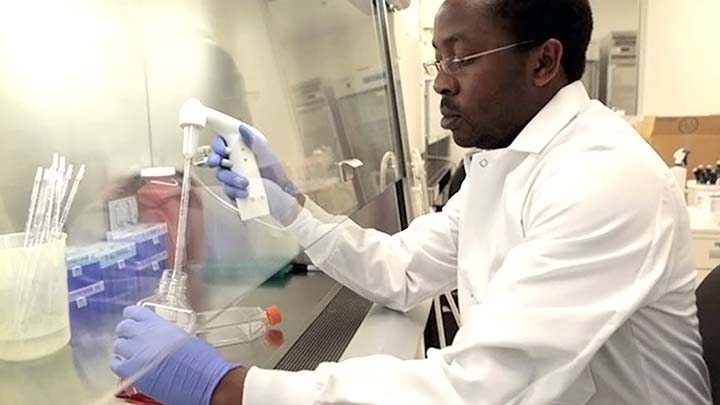CD4 Cell Counting Must not be Sidelined if we are to Beat AIDS
Tom Chiller, Chief, Mycotic Diseases Branch, the Center for Disease and Control Prevention
Which key populations are most at risk from advanced HIV?
My expertise is in fungal diseases. These are opportunistic infections that occur in people with weakened immune systems and can be fatal. People who have low CD4 counts — especially below 200 — are at very high risk of opportunistic infections.
Why do HIV patients need access to CD4 testing?
The best way to determine if they are at risk of an opportunistic infection is to get a CD4 count — via a simple blood test — and then start them on antiretroviral therapy (ART) as quickly as possible. There is a caveat to that, however. If individuals with advanced stages of the disease are given ART, they may suffer from potentially fatal immune reconstitution inflammatory syndrome, or IRIS. So clinicians need to know a patient's CD4 count to be able to make the best healthcare decisions.
Is there confusion about CD4 testing and viral load testing?
I think there is, but these are two very different tests. Viral load measures the virus itself and is a critical way for clinicians to understand how ART treatment is working; whereas CD4 measures a person's immune status. A patient only needs a CD4 test before they are started on ART. If they stay virally suppressed, they won't need a further CD4 test.
Does CD4 testing improve patient care overall?
Absolutely, so we need to make sure HIV programmes understand when CD4 testing should be used. It will help them target their resources in a more appropriate manner so they can get the best outcomes for their patients.
Why count CD4 cells?
CD4 T lymphocytes (CD4 cells) are a type of white blood cell in human blood that play a major role in protecting the body from infection.
Learn more:
There were approximately 36.7 million people living with HIV at the end of 2016. iii
The African Region is the most affected region, with 25.6 million people living with HIV in 2016.iii
The African region also accounts for almost two thirds of the global total of new HIV infections.iii
CD4 cells are major targets for HIV. The virus binds to CD4 cells, enters them, replicates inside them, and eventually kills them.iv
The Centers for Disease Control and Prevention (CDC) considers people who have an HIV infection and CD4 counts below 200 cells/mm3 to have AIDS (stage III HIV infection), regardless of whether they have any signs or symptoms.v
CD4 Cell Counting

HIV Advanced Disease Management
More than a third of people starting ART have advanced HIV disease, and an increasing number of patients re-present to care at an advanced stage of HIV disease following disengagement from care.
WHO CD4 Guidelines for Immunocompromised Patients
The challenge for clinicians is not just to treat HIV patients with antiviral therapies – but to understand exactly how far their immune system has been compromised. Otherwise, they become susceptible to life threatening, opportunistic diseases.
CD4 Must Not be Sidelined if we are to Beat AIDS
Opportunistic infections that occur in people with weakened immune systems can be fatal. People who have low CD4 counts — especially below 200 — are at very high risk of opportunistic infections.
Funding Drives Countries To Choose Between CD4 Testing And Viral Load
CD4 testing is the recommended way to identify people in advanced stages of the disease and whose reduced immunity therefore exposes them to potentially fatal, opportunistic infections.References:
- https://www.thelancet.com/commissions/global-health-HIV
- https://www.who.int/en/news-room/fact-sheets/detail/hiv-aids
- https://www.afro.who.int/health-topics/hivaids
- https://www.who.int/hiv/mediacentre/news/hiv-testing-90targets/en/
- http://www.unaids.org/sites/default/files/media_asset/20170720_Data_book_2017_en.pdf
- https://www.sciencedaily.com/releases/2018/07/180719195647.htm

